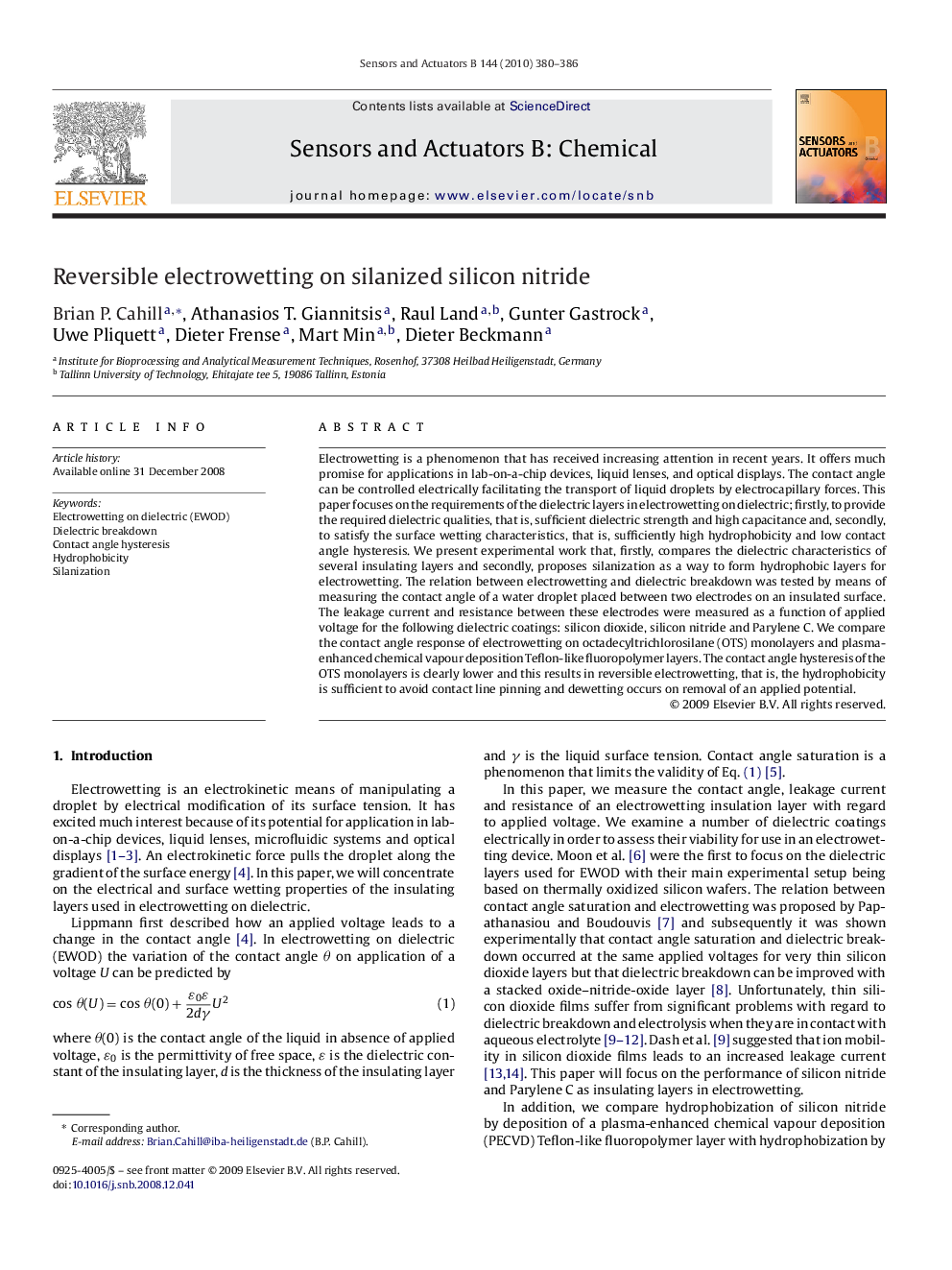| کد مقاله | کد نشریه | سال انتشار | مقاله انگلیسی | نسخه تمام متن |
|---|---|---|---|---|
| 744922 | 894408 | 2010 | 7 صفحه PDF | دانلود رایگان |

Electrowetting is a phenomenon that has received increasing attention in recent years. It offers much promise for applications in lab-on-a-chip devices, liquid lenses, and optical displays. The contact angle can be controlled electrically facilitating the transport of liquid droplets by electrocapillary forces. This paper focuses on the requirements of the dielectric layers in electrowetting on dielectric; firstly, to provide the required dielectric qualities, that is, sufficient dielectric strength and high capacitance and, secondly, to satisfy the surface wetting characteristics, that is, sufficiently high hydrophobicity and low contact angle hysteresis. We present experimental work that, firstly, compares the dielectric characteristics of several insulating layers and secondly, proposes silanization as a way to form hydrophobic layers for electrowetting. The relation between electrowetting and dielectric breakdown was tested by means of measuring the contact angle of a water droplet placed between two electrodes on an insulated surface. The leakage current and resistance between these electrodes were measured as a function of applied voltage for the following dielectric coatings: silicon dioxide, silicon nitride and Parylene C. We compare the contact angle response of electrowetting on octadecyltrichlorosilane (OTS) monolayers and plasma-enhanced chemical vapour deposition Teflon-like fluoropolymer layers. The contact angle hysteresis of the OTS monolayers is clearly lower and this results in reversible electrowetting, that is, the hydrophobicity is sufficient to avoid contact line pinning and dewetting occurs on removal of an applied potential.
Journal: Sensors and Actuators B: Chemical - Volume 144, Issue 2, 17 February 2010, Pages 380–386